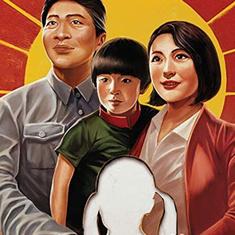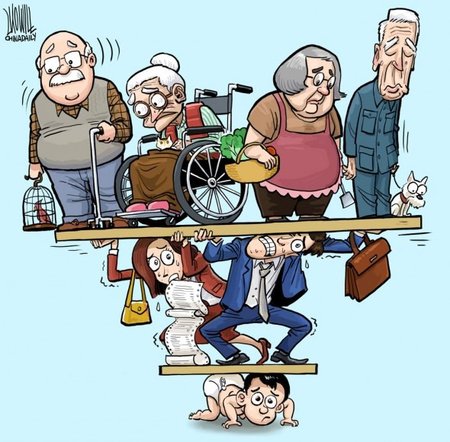
The One Child Policy
Last updated: Saturday May 4th, 2024
Report this blog
Introduction
Do you belong to the estimated 80% of the population who have a sibling? Have you ever considered being an only child? What if almost everyone in the whole country you lived in had only one child and you had no siblings? This was how life was in China during the One Child Policy (OCP). Beginning in the start of 1980, the OCP was in effect for almost 3 decades. It was enforced strictly and led to thousands of forced abortions and sterilizations. What happened to the population in all this time? It's time to find out.
Enforcements & Trafficking
The One Child Policy was enforced with forced abortions, financial sanctions, education being denied and compulsory sterilizations. Authorities announced that 336m abortions and 196m sterilizations were performed while the OCP was in effect. Fines were common and they were usually a few thousand yuan, which doesn’t seem like much, but bear in mind that the average Chinese citizen who resided in a rural area earned around 155 yuan monthly. Keeping living expenses in mind, it is evident that it would take many years for a family to afford the fine. This was a powerful deterrent, but there were couples who chose to bear the expenses anyway.
Unfortunately, forced abortions were common, which led to problems in the general population. As the government encouraged abortions, the families would often ask the doctor the gender of the child and if it was a girl, they would abort it. The female infanticide led to a severe sex ratio imbalance with there being about thirty million more men than women. This was because of a strong son preference throughout the nation. Why? In Chinese patriarchal culture, men are thought to carry on the family name, have a better wage earning capacity, and be recipients of inheritance. Due to the lack of brides, human trafficking has increased for purposes ranging from marriage to slavery. Women would be brought involuntarily from the neighboring country of Myanmar, which is currently in a civil war and is one of the poorest countries of Asia. Poor and desperate women would be lured by traffickers with the promise of better wealth to support their families. Similar cases are occurring across Southeast Asia.
However, there were exceptions and some people were exempted from the policy. Couples within some ethnic minority groups were exempted from the policy. If one’s firstborn was disabled or handicapped, couples were permitted to have a second and if their first child was a girl, couples were allowed to have a second child after five years in some rural areas.
Population Impact
So, how has the One Child Policy impacted both the Chinese and the overall global population? It has managed to reduce the fertility rate in China to just one, it has helped improve the health and welfare for women and also might have increased job opportunities and wages. Nonetheless, there are a multitude of issues and problems across the nation. One of these is a future shortage of factory workers. China has about 30% of the entire manufacturing output of the whole world. This is because of cheap labor and therefore thousands of companies seek to manufacture their products in China. Cheap labor works because of an enormous workforce, a small job market and low wages. Simply, if a few workers left, it wouldn’t matter much because more people would take their places. However, due to the shrinking population, there will be a workforce shortage. A lack of surplus workers allows them to demand higher wages, which will lead to less corporate profit. This has the snowball effect of companies relocating their factories overseas. As a result, investments will slowly halt one by one and the factory sector of the economy will either gradually decline or cease to grow and remain constant. Manufacturing is a massive part of China’s economy, so if that section were ever to be compromised, it could lead to a recession within the country. Another issue is the aging population. By the year 2040, it is projected that about 28% of the population will be over the age of 60. This is due to low fertility rates and a long life expectancy. For comparison, an estimated 16% of the population will be over the age of 60 in the neighboring country of India. This will lead to increased stress levels in the working population. This means that they will have less time to spend with their families, resulting in even fewer children.
Another issue is the “4-2-1” problem. This refers to how many people the youngest adult generation must be responsible for. One individual must support two parents and four grandparents, excluding themselves, and if they marry, they must support twice as many people. China’s current elderly population is about 143 million people and this is only predicted to rise. This can be countered by giving more care benefits and in 2011, many provinces started allowing parents to have a second child if they are an only child. A problem that the aging population brings is that they cause a strain on China’s health and financial resources. The final problem is the unbalanced sex ratio, where there were about thirty million more men than women. This led to the previously mentioned human trafficking issue.

What if it never existed?
For over half a century, China’s government has imposed restrictions on the birth of children throughout the country. However, this raises an important question because of it. What if there were never any birth quotas to begin with? Estimates put China’s population to be around 1.6 or 1.7 billion people, approximately 250 to 300 million more people. It would also have caused a massive strain on China’s agricultural and natural resources, and would have likely led to food rationing. Something similar to the ration books issued by the British government during the Second World War. However, previous attempts to control the population were actually working well. In the 1970s, the leader of the ruling government, Mao Zedong at the time, promoted family planning more sufficiently and due to their schemes they managed to reduce the fertility rate from 5.7 births per woman to 2.8 births per woman between 1970 and 1980. (Macrotrends) These schemes included making posters, art and entertainment that frequently had slogans like, “Three is too many, one is not enough, two is perfect.” What this shows is that even without the One Child Policy it is likely that the fertility rate would nonetheless decrease although it would not be as drastic as it was when the One Child Policy was introduced. If the government never had the One Child Policy, a population crisis, the deaths of millions of children and numerous human rights violations could have been averted.
Conclusion
To summarize, I believe that it was a terrible decision by the Chinese government. The OCP has overall been more of a burden than a benefit because of the significant disadvantages associated with the advantages. However, I strongly believe that China can slowly repair its mistakes. To begin with, they should remove any kind of restricting policy, which is a serious human rights violation and give more rewards to those who choose to have more than one child. Finally, I really hope people understand the seriousness of this.

Markers of female empowerment, such as literacy, were on the rise all over the world anyway during the period covered by the policy -- ascribing this as a success of the policy is either intentionally disingenuous or badly misinformed. And I'm not sure I'd call the decades-long wholesale slaughter of female children empowering, anyway.